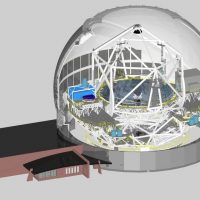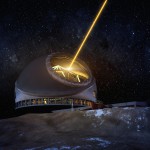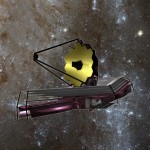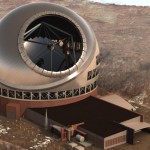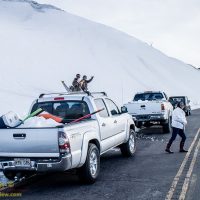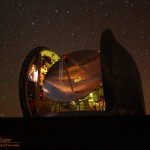
There is a developing maintenance situation at Gemini, a cooling system is failing putting very valuable equipment at risk. To deal with Gemini sought and received permission from both the state and the protesters to send a crew up that mauna to perform emergency maintenance.
Long story short, the protesters failed to honor their agreement today…
At approximately 7:45 a.m. on Tuesday, July 23, a car containing technicians from Gemini Observatory was stopped by activists from entering the Maunakea Access Road. The observatory had been assured access the previous day in conversation with law enforcement, and the Office of Maunakea Management. Despite prior public statements indicating observatory technicians would not be denied access to the telescopes, activists today contradicted their earlier position. Activists told observatory personnel that without a formal, public letter from the observatories – supporting activists’ demands of the state – access for critical technical maintenance is no longer supported.
Official statement from the Maunakea Observatories
Upon initial approach, the car of technicians was initially waived through the bamboo gate; the driver stopped to speak with an official from the Office of Maunakea Management, at which point a kupuna approached the car, stating that access was not to be allowed. Five additional activists then moved to stand in front of the car. This denial of access was contrary to the understanding of access approval by the Gemini crew members and the individual who had initially opened the gate.
The car of technicians respectfully pulled to the side of the road at the request of the activists and waited for approximately 45 minutes. During that time, activist leaders indicated that they were working to determine whether the technicians should be allowed access.
Eventually, the Gemini crew members elected to turn back, given the uncertainty of eventual access. The crew was flagged down on their way away from the access point with an appeal from activists to continue to wait. The crew stopped to speak with the activists briefly before continuing to the Gemini base facility in Hilo.
The Maunakea Observatories continue to support the efforts of state and county law enforcement to restore safe and reliable access to the access road.
About the planned technical work at Gemini Observatory today:
Gemini Observatory uses gaseous helium in a cooling circuit to maintain stable low temperatures for two highly-delicate instruments used in astronomical observations. The cooling system has become unstable, which requires specialized technicians to shut down in order to prevent damage to the instruments and the cooling circuit itself.
The observatory personnel planned to shut off the compressors, move one instrument at risk to a separate cooling circuit, shut down the second, disconnect specific joints in the cooling system, and perform a standard facility inspection that is usually conducted on a daily basis during normal operations. The planned technical work would have taken approximately three hours; the crew would have then come directly back to their Hilo base facility.
On social media the protesters are trying to deny the event, claiming that the state is truly responsible. This is contradicted by the statements of the protest’s official spokesman who put his account of the incident into his daily video report.
In the report Kahoʻokahi Kanuha makes it clear that he was attempting to negotiate with the maintenance crew, asking for a statement supporting the protesters. The crew has no authority to negotiate, no authority to make statements or agreements for others. When this occurred they left as it was clear the protesters had failed to honor their agreements.

